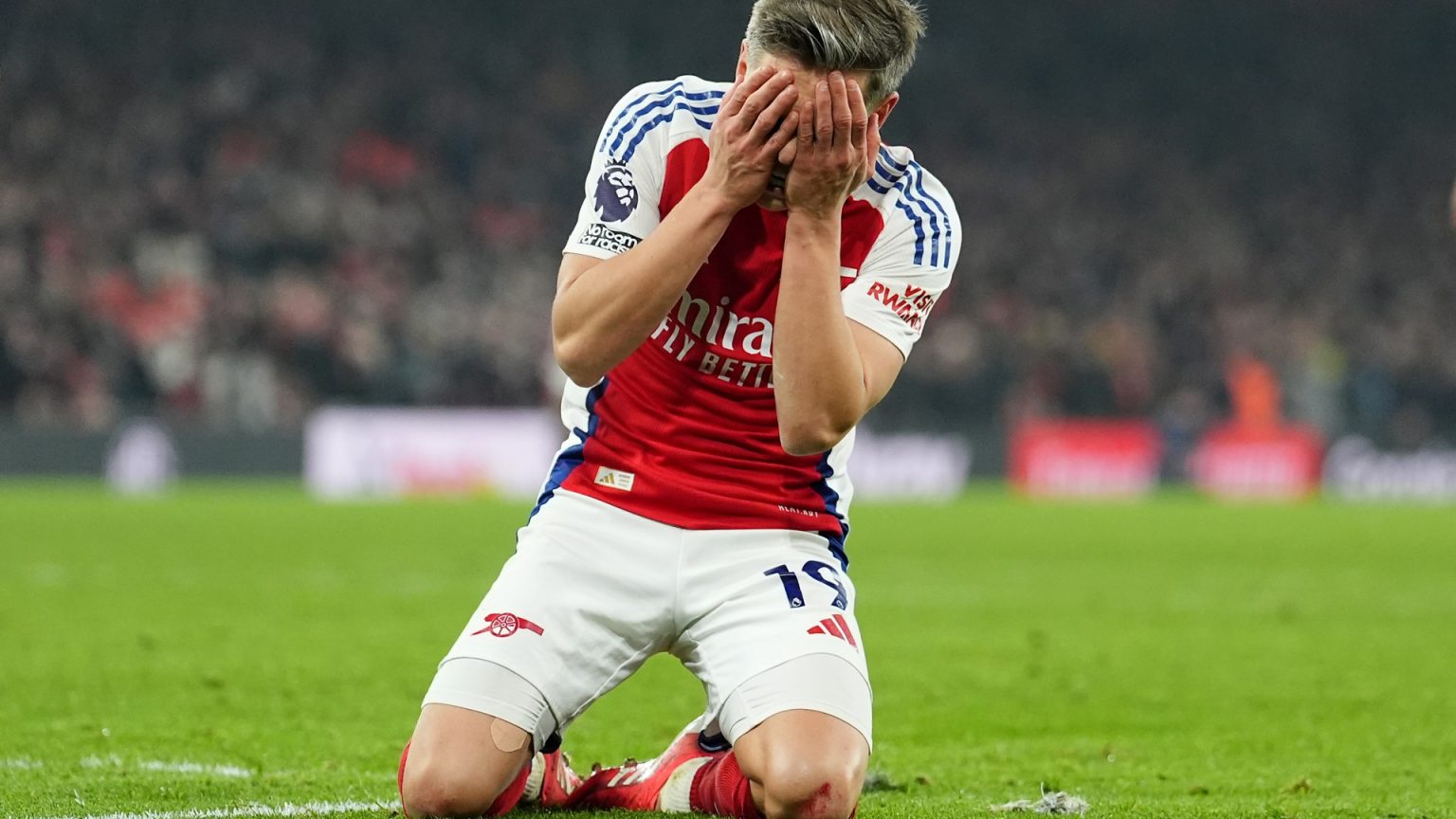Arsenal’s recent 2-2 draw against Aston Villa at the Emirates stadium serves as a microcosm of their broader struggles in their quest for Premier League glory. While the immediate disappointment stems from surrendering a two-goal lead at home, the larger concern lies in the recurring pattern of stumbling when faced with key injuries and a lack of squad depth. This draw, leaving them six points adrift of leaders Liverpool with a game in hand, highlights the fragility of Arsenal’s title challenge.
Despite significant investment of approximately £700 million in new players since Mikel Arteta’s arrival in December 2019, the Gunners still appear vulnerable when their starting eleven is disrupted. The Villa game saw a makeshift lineup with Thomas Partey at right-back, Jurrien Timber at centre-back, and Gabriel Martinelli deployed on the right wing. The bench, lacking experienced reinforcements, comprised loanee Raheem Sterling and three academy players with minimal senior experience. This lack of depth stands in stark contrast to their title rivals. While injuries to key players like Gabriel Jesus, Bukayo Saka, and Ben White have undoubtedly hampered Arsenal’s campaign, the team’s reliance on a near-perfect starting lineup to secure victories exposes a critical weakness.
The recurring theme of Arsenal’s seasons under Arteta is their vulnerability to injuries. Last season’s title challenge faltered with injuries to key players like William Saliba and Thomas Partey. This season, a similar pattern is emerging. While injuries are an unavoidable part of football, Arsenal’s struggles underscore the need for a more robust squad capable of weathering such setbacks. Competitors like Manchester City and Liverpool, even when facing their own injury woes, possess a deeper pool of talent to draw upon, allowing them to maintain their title challenges. City can call upon expensive signings like Jack Grealish and Jeremy Doku, while Liverpool can deploy record signing Darwin Nunez. Arsenal’s comparatively thin squad leaves them exposed when key personnel are unavailable.
The need for a world-class striker has been a recurring theme in Arsenal’s discourse. While the absence of a prolific goalscorer like Erling Haaland or Alexander Isak is undoubtedly a factor, the Villa game reveals a more fundamental issue. Even with goals from Gabriel Martinelli and Kai Havertz, defensive errors and a lack of resilience allowed Villa to snatch a draw. This highlights the team’s overall fragility. It isn’t just the absence of a clinical finisher, but systemic issues in maintaining consistency and resilience, especially when facing adversity.
The contrast between Arsenal’s spending and their squad depth raises questions about the effectiveness of their recruitment strategy. While the £700 million investment has undoubtedly improved the overall quality of the squad, the lack of depth in key areas suggests a potential imbalance in resource allocation. The reliance on a starting eleven, coupled with the inability to adequately replace injured players, exposes a strategic vulnerability that could continue to undermine their title aspirations. The club’s transfer strategy needs to address this deficiency by focusing not just on acquiring star players, but also on building a more robust and well-rounded squad.
Arsenal’s situation underscores the financial realities of competing at the highest level of English football. While Arteta has undoubtedly made significant progress in rebuilding the team, challenging for the title requires not only a strong starting eleven, but also the depth to withstand injuries and maintain consistency throughout a grueling season. The financial might of clubs like Manchester City and Liverpool allows them to assemble squads with both quality and depth, giving them a significant advantage in the title race. Arsenal’s ongoing challenge lies not just in acquiring a star striker, but in building a squad capable of competing with the financial powerhouses of the Premier League. Their current predicament highlights the crucial link between investment, squad depth, and sustained success in modern football.




